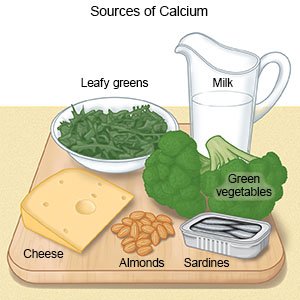Growth Hormone Deficiency in Children
Medically reviewed by Drugs.com. Last updated on Apr 6, 2025.
What is growth hormone deficiency (GHD)?
GHD is a condition that prevents your child's pituitary from making enough growth hormone. The pituitary is a gland in the brain. Growth hormone makes children and adolescents grow taller. Throughout life, it helps increase muscle mass and strengthens bones. Growth hormone also helps the liver and pancreas work correctly and stimulates the immune system. Your child may be born with GHD, or it may develop later.
What are the signs and symptoms of GHD?
- In newborns, hypoglycemia (low blood sugar level)
- A small penis in newborn males
- Shorter height than average for his or her age
- Growth continues to fall more behind average until puberty ends
- A later start to puberty than average, or puberty does not start
- Extra body weight, usually in the abdomen
What causes or increases my child's risk for GHD?
- A family history of GHD
- Problems with the way the pituitary gland forms before birth
- An injury to the pituitary gland, such as from a head injury
- A condition that affects the skull or face, such as cleft lip or palate
- An infection that affects the pituitary gland
- A pituitary gland tumor, or radiation used to treat a tumor
How is GHD diagnosed?
Your child's healthcare provider will check your child's height and weight. He or she will use a growth chart to compare your child's height with average heights of children his or her age. He or she may ask if your child has a family history of GHD or other hormone disorders. Tell the provider about your child's medical conditions and current medicines. If your child is an adolescent, the provider may ask if puberty has started. Your child may need several tests before GHD can be diagnosed:
- Blood tests may be used to check the amount of certain hormones in your child's body.
- Some tests are used to rule out other conditions that may be causing your child's growth problems. Your child's thyroid hormone level may be checked. Females may be checked for a condition called Turner syndrome that affects growth and development.
- If the tests show these are not the cause, your child's growth hormone level may be checked. The amount of growth hormone can change throughout the day. This means it is not the best way to find GHD.
- Your child's insulin-like growth factor 1 (IGF-1) level may also be checked. The IGF-1 level does not change as much as GHD. An extremely low IGF-1 level means your child likely has GHD.
- An x-ray may be taken of your child's hand, wrist, and fingers. Your child's provider will measure the growth plates at the ends of the bones. As your child gets older, growth plates become thinner until they disappear. Your child's provider will give a bone age based on the size of the growth plates.
- An MRI may be used to check your child's pituitary gland and tissues around it. The pictures may show a tumor, injury, or other problem. Do not let your child enter the MRI room with anything metal. Metal can cause serious injury. Tell the provider if your child has any metal in or on his or her body.
- A growth hormone stimulation test is used to see if growth hormone is produced. Your child will be given medicines that cause growth hormone to be released. His or her blood will be drawn about 2 or 3 hours later. If growth hormone is not released, your child's provider may diagnose GHD.
How is GHD treated?
Treatment depends on your child's height and age, and the cause of his or her GHD. Treatment usually includes medicine to replace missing growth hormone. Your child's provider will tell you how long to continue giving the medicine. This is usually for several years, until growth is finished.
- Recombinant human growth hormone (rhGH) is an injection your child will be given 1 time every day. Your child's healthcare providers will show you how to give the injection. It can be given in your child's arm, leg, buttock, or stomach. Your child's provider will show you how to rotate sites (choose a different site each day).
- Human IGF-1 is an injection that may be given if your child does not respond to rhGH.
What can I do to help my child manage GHD?
- Help your child develop self-esteem. Your child may have a hard time forming self-esteem that is not tied to physical appearance. Your child may feel different if he or she is shorter than others. He or she may also be shorter than brothers or sisters who are younger. Offer to listen to your child if he or she wants to talk about feeling different. Do not dismiss your child's feelings. Help your child focus on what he or she does well or likes about himself or herself.
- Give your child healthy foods that are high in calcium and vitamin D. Calcium and vitamin D work together to help your child's body make bones and keep them strong. Good sources of calcium are milk, cheese, broccoli, tofu, almonds, and canned salmon and sardines. Vitamin D is in fish oils, some vegetables, and fortified milk, cereal, and bread. Vitamin D is also formed in the skin when it is exposed to the sun. Ask your child's healthcare provider how much sunlight is safe for your child.

- Help your child be physically active. Physical activity can help build strong bones. It can also help prevent heart disease, diabetes, and other health problems. Your child should try to get 60 minutes of physical activity each day. His or her provider can help you create a physical activity plan for your child. The plan will include aerobic activity, such as walking, jumping rope, or riding a bike. The plan will also include activities to increase muscle, such as weightlifting.

When should I call my child's doctor?
- Your child feels depressed or is having self-esteem problems from GHD.
- Your child has new or worsening symptoms.
- You have questions or concerns about your child's condition or care.
Care Agreement
You have the right to help plan your child's care. Learn about your child's health condition and how it may be treated. Discuss treatment options with your child's healthcare providers to decide what care you want for your child. The above information is an educational aid only. It is not intended as medical advice for individual conditions or treatments. Talk to your doctor, nurse or pharmacist before following any medical regimen to see if it is safe and effective for you.© Copyright Merative 2025 Information is for End User's use only and may not be sold, redistributed or otherwise used for commercial purposes.
Further information
Always consult your healthcare provider to ensure the information displayed on this page applies to your personal circumstances.
